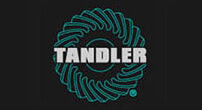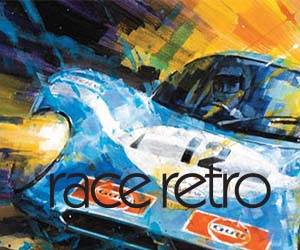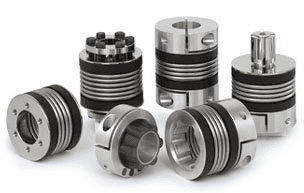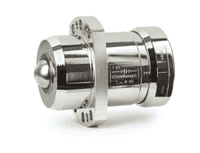- Contact 0870 350 7767
- |
- Advertise
Home > Tandler Precision Ltd > Don't be swayed by fashion... Choose the most appropriate drive
Don't be swayed by fashion... Choose the most appropriate drive
 News and PR from Tandler Precision Ltd - Published 07 March 2013
Electronic servo drives are certainly in vogue. For many design engineers, they are the preferred choice for systems which synchronise the movement and position of fast moving components.
News and PR from Tandler Precision Ltd - Published 07 March 2013
Electronic servo drives are certainly in vogue. For many design engineers, they are the preferred choice for systems which synchronise the movement and position of fast moving components.
Clearly they have an important contribution to make but they are not necessarily the right choice for all applications. A mechanical solution may not be as technically exciting but in many cases it can be more reliable, more accurate and far more cost efficient in the long run.
Electronic servo drives are certainly in vogue. For many design engineers, they are the preferred choice for systems which synchronise and co‑ordinate the movement and position of fast moving components. Clearly they have an important contribution to make but they are not necessarily the right choice for all applications. A mechanical solution may not be as technically exciting but in many cases it can be more reliable, more accurate and far more cost efficient in the long run.
Mechanical drives are often seen as old fashioned and low tech. In truth they are the subject of much development. The fact is mechanical drives are increasingly getting better and those at the quality end of the scale are now able to deliver even greater accuracy and reliability. More accurate machining of components, more durable materials, higher quality bearings, new methods of heat treatment and in particular vacuum hardening which effectively eliminates any distortion ‑ all these elements have contributed to the significant improvement.
The electronic drive is often sold on the basis of it being more accurate than its mechanical counterpart. Certainly mediocre quality mechanical drives may be inferior but those at the higher end of the quality scale can far exceed the accuracy of the electronic drive. The main benefit of a largely mechanical system ‑ one comprising line shafts and bevel gear boxes ‑ is that its accuracy is maintained throughout the system. Basically, what you put in at one end, you get out the other! Within one revolution a mechanical drive will always repeat itself, it will always return to its original position. Of course the transmission error of a geared system must be considered, but this can be measured. It is a known quantity for which compensation can be made.
In a multi‑stage process driven by electronic drives, the relationship between the position of the product and various elements of the machine is fed back to the controller by a variety of peripheral sensors. The system is therefore far more complicated and often servo motors cannot respond fast enough to achieve the required degree of accuracy. By its very nature, an electronic drive system will only respond to where the product was in relation to the drive, not where it is.
There are however, applications where a single electronic drive offers advantages over a single mechanical drive. If you need fast response and where the application involves changes in motion, the electronic drive is the best choice. It is ideal for replacing cams and for applications which require high torque for fast acceleration and braking. However, if the whole system requires high torque, the electronic drive and motor will need
Electronic servo drives are certainly in vogue. For many design engineers, they are the preferred choice for systems which synchronise and co‑ordinate the movement and position of fast moving components. Clearly they have an important contribution to make but they are not necessarily the right choice for all applications. A mechanical solution may not be as technically exciting but in many cases it can be more reliable, more accurate and far more cost efficient in the long run.
Mechanical drives are often seen as old fashioned and low tech. In truth they are the subject of much development. The fact is mechanical drives are increasingly getting better and those at the quality end of the scale are now able to deliver even greater accuracy and reliability. More accurate machining of components, more durable materials, higher quality bearings, new methods of heat treatment and in particular vacuum hardening which effectively eliminates any distortion ‑ all these elements have contributed to the significant improvement.
The electronic drive is often sold on the basis of it being more accurate than its mechanical counterpart. Certainly mediocre quality mechanical drives may be inferior but those at the higher end of the quality scale can far exceed the accuracy of the electronic drive. The main benefit of a largely mechanical system ‑ one comprising line shafts and bevel gear boxes ‑ is that its accuracy is maintained throughout the system. Basically, what you put in at one end, you get out the other! Within one revolution a mechanical drive will always repeat itself, it will always return to its original position. Of course the transmission error of a geared system must be considered, but this can be measured. It is a known quantity for which compensation can be made.
In a multi‑stage process driven by electronic drives, the relationship between the position of the product and various elements of the machine is fed back to the controller by a variety of peripheral sensors. The system is therefore far more complicated and often servo motors cannot respond fast enough to achieve the required degree of accuracy. By its very nature, an electronic drive system will only respond to where the product was in relation to the drive, not where it is.
There are however, applications where a single electronic drive offers advantages over a single mechanical drive. If you need fast response and where the application involves changes in motion, the electronic drive is the best choice. It is ideal for replacing cams and for applications which require high torque for fast acceleration and braking. However, if the whole system requires high torque, the electronic drive and motor will need
Other announcements from Tandler Precision Ltd
-
Tandler Exhibiting at Race Retro 2015
Tandler will be exhibiting at this years Race Retro show at Stoneleigh 20 Feb - 22 Feb 2015. You will find Tandler in Hall 2, stand D48.
27 Jan 2015
-
Everything you need to know about safety couplings
Everything you need to know about safety couplings
07 Mar 2013
-
World's smallest 160,000Nm Torque Limiter
The best thing about the new ST torque limiters from R+W is not only do they offer distinct benefits over shear pin and hydraulic alternatives.
07 Mar 2013






